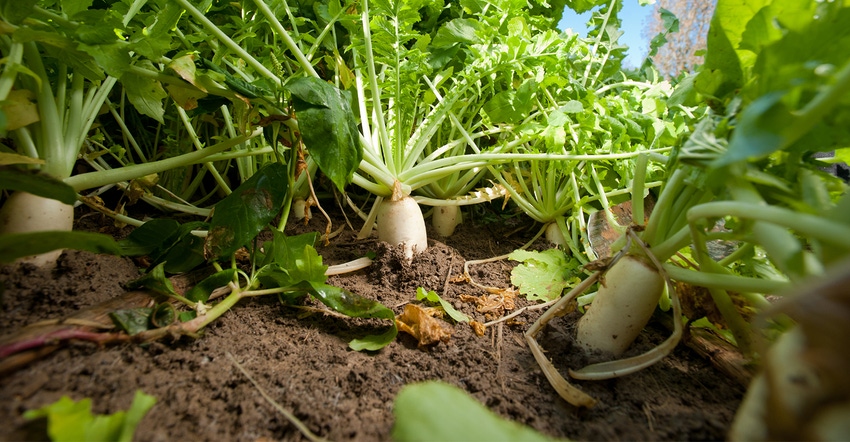January 16, 2018

Despite the long stretch of extremely cold weather this winter, some cover crops — especially those that are winter-hardy — will still have to be killed in the spring before planting.
Jill Sackett, University of Minnesota Extension educator, summarizes some of the things you need to know to terminate cover crops effectively:
1. A general guideline is to spray when the cover crop is about 4 to 8 inches tall. Younger, smaller plants are easier to kill and tend to have a lower carbon-to-nitrogen ratio for faster decomposition. Cool spring temperatures can lead to cover crops that aren’t actively growing. If they grow, then they will have trouble taking up the herbicide. If the spring weather is not cooperating or if you made the decision to allow the cover crop to grow taller, a second herbicide application may be needed to fully control the cover crop. Always consult product labels before using a herbicide, and check for any restrictions to ensure use of the product will not impact your cropping rotation or forage plans.
2. A tillage implement can also be used alone or with herbicide to terminate some cover crops. A field cultivator operated 3 to 4 inches deep will cut roots and bury the plants. Coulter carts and vertical tillage equipment won’t do the same, since they move soil up and down. One pass may not be enough to kill a cover crop. Two passes may be needed.
3. A roller crimper or a mower can also be used to terminate winter-hardy cover crops. However, these methods are successful only if the plants have begun to flower or head out. This often means waiting until late May to mow or roll them. Be sure to plant in the same direction as you roll the plants, and use a properly calibrated planter that has sufficient attachments or down pressure to move aside or cut through the residue, she advises.
Planting through residue
The amount of residue you will have to deal with when planting depends partly on which cover crop species you used. Brassicas and legumes begin decomposing and break down faster than grasses because they have a lower carbon-to-nitrogen ratio. The age of the cover crop stand also affects decomposition. The earlier you planted the cover crop, the more mature the cover crop is at termination. This results in a higher carbon-to-nitrogen ratio and slower decomposition.
“Be sure to calibrate your planter so that it can sufficiently handle the cover crop residue situation,” she says. “This may mean that you will need to recalibrate the planter, even within a field if there are areas with measurable changes in residue type or amount.”
Source: University of Minnesota Extension
You May Also Like




